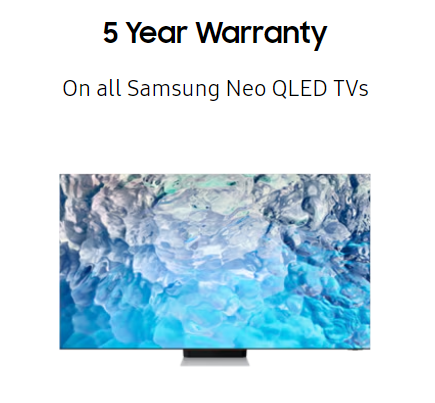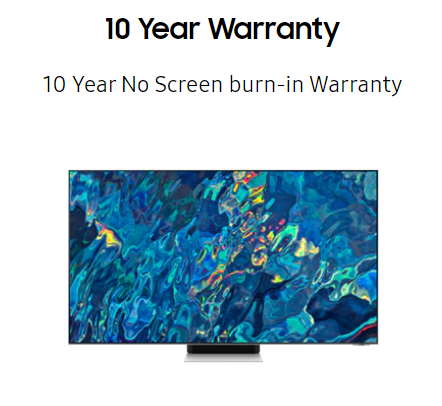Buying Guide for Smart TV in India
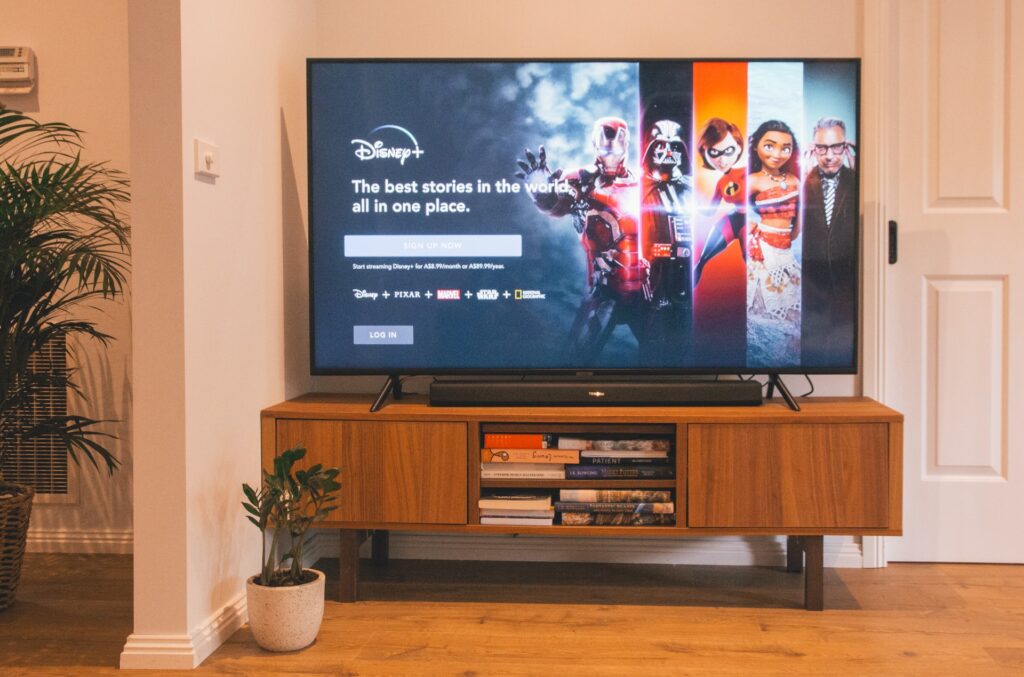
Overview
In today’s digital world, a Smart TV is the heart of home entertainment. It lets you stream shows, surf the web, and even control your smart home gadgets. Choosing the right one in India is important. Our buying guide for Smart TV in India covers all the key factors you need to know before purchasing.
Ready to dive in?
Let’s get started!
How to Decide the Screen Size?
This is the most important factor when deciding on a Smart TV for your home.
The most practical way to decide the screen size for the best viewing experience is to measure the distance between the TV and your viewing area – it can be a bed/couch/chair.
The size of your Smart TV should harmonize with the space it occupies. A TV that’s too large for a small room or too small for a spacious living area can compromise your viewing experience.
To find the perfect size, consider the following:
- Measure the distance from your TV to the seating area.
- A general rule of thumb for a Full HD TV is that the screen size should be around 40 inches for a comfortable viewing experience. For 4K TVs, you can go larger without sacrificing quality.
If the viewing distance is between 4ft -6 ft, then, you should consider buying a 32-inch TV Screen.
Display Technology
Choosing the right display technology is one of the first decisions you’ll face. Here’s a breakdown of the three primary options:
LED TVs
These are the most common and affordable. LED TVs use a backlight behind an LCD panel to create images. They offer good picture quality and are budget-friendly.
QLED TVs
Quantum Dot technology enhances LED TVs’ brightness and colour accuracy. These are a great choice if you want vibrant visuals and can afford a slightly higher price tag.

OLED TVs
OLED TVs have self-emissive pixels, allowing each pixel to emit light or turn off completely. This results in true blacks, vibrant colours, and stunning contrast. They are ideal for those who crave the best picture quality, although they tend to be more expensive.
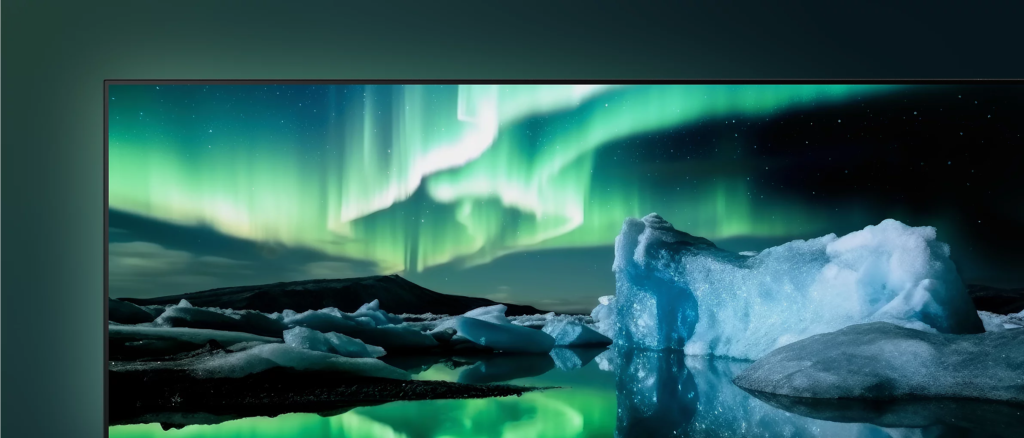
Panels
Generally, there are two types of panels used in Smart TV in India. These are A) IPS Panel B) VA Panel. We will discuss their behavior and features down below:
| Description | IPS Panel | VA Panel |
|---|---|---|
| Picture Quality | Excellent | Excellent |
| Viewing Angles | Wider viewing angle capability | Limited viewing angle capability. Viewer has to sit in front of the panel for the excellent viewing experience |
| Colour Loss when viewed from far corners in the room | Almost Negligible | Noticeable drop in Colour Quality |
| Brightness Loss when viewed from far corners in the room | Almost Negligible | Noticeable drop in Brightness Quality |
| Suitable Conditions in the Room | Works perfectly fine in the bright room | Works perfectly fine in the closed room |
| Main Advantage | Colour reproduction is excellent in itself. But, in comparison, it produces less vibrant colours than VA Panel | Black looks deeper. Hence, you will get more vibrant colours in VA Panel |
Resolution
In India, Smart TV’s fall under these categories of resolution:
| Description | Resolution(Pixels) |
|---|---|
| HD Ready | 1366 x 768 |
| Full HD | 1920 x 1080 |
| 2K | 2048 × 1080 |
| UHD/4K | 3840 x 2160 |
| 8K | 7680 × 4320 |
Peak HDR Brightness
Peak HDR brightness is key to a great viewing experience, especially for HDR content. It means a TV’s highest brightness level when showing HDR scenes.
In our buying guide for smart TV, we’ll break down what peak HDR brightness really means and why it matters.
What is Peak HDR Brightness?
- Peak HDR brightness is measured in nits (cd/m²). It represents the highest level of luminance that a display can produce when rendering HDR content.
- The term “nit” is used to quantify the intensity of light emitted by a screen.
Enhanced Contrast and Realism
- A higher peak HDR brightness level results in more pronounced contrast between an image’s darkest and brightest parts.
- This enhanced contrast contributes to a more realistic and immersive viewing experience, closely mimicking real-world lighting conditions.
Key Elements
- Peak HDR brightness is crucial for highlighting vital visual elements in HDR content, such as specular highlights, fine details in shadows, and vibrant colours.
- It ensures that the most subtle nuances in a scene are visible, even in extremely bright or dark scenarios.
Display Types
- OLED and QLED displays are known for achieving impressive peak HDR brightness levels, making them popular for HDR enthusiasts.
- LED/LCD displays vary in peak HDR brightness capabilities, with some high-end models offering competitive levels.
Point to Consider
A Smart TV with a peak brightness of 100 Nits would display SD channels with the same image quality as that of a Smart TV with a peak brightness of 300 Nits – 350 Nits – 500 Nits !!
HDR Content Benefits
- HDR content, whether in movies, TV shows, or games, is specifically designed to take advantage of displays with higher peak HDR brightness.
- The expanded luminance range allows for a more accurate representation of the content creator’s vision.
HDR/ HDR 10/ Dolby Vision Support
High Dynamic Range (HDR) technology has changed how we watch TV, giving us brighter colours, better contrast, and a greater range of brightness. When exploring HDR, you’ll come across two main formats: HDR10 and Dolby Vision.
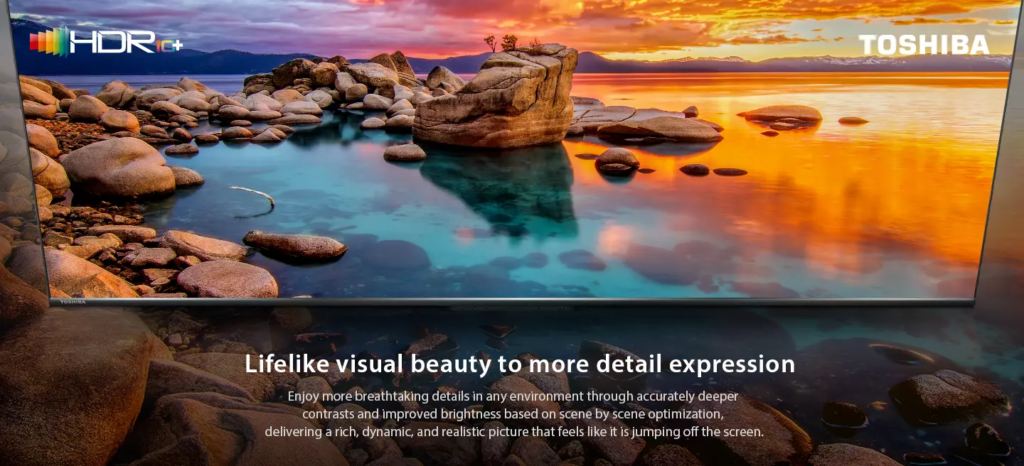
Our buying guide for smart TV in India will explain HDR and how these formats can improve your viewing experience.
HDR (High Dynamic Range)
- Enhanced Contrast: HDR extends the range between an image’s darkest and brightest parts, delivering deeper blacks and brighter whites.
- Richer Colors: It allows for a wider colour gamut, resulting in more lifelike and accurate colours.
- Greater Detail: HDR preserves finer details in shadows and highlights, ensuring a more realistic image.
- Immersive Experience: Viewers enjoy an enhanced, more immersive visual experience akin to what the human eye perceives.
HDR10
- Open Standard: HDR10 is an open standard format, making it widely adopted across various devices, including TVs, monitors, and projectors.
- Static Metadata: HDR10 uses static metadata, which provides information about the content’s colour and brightness levels at the beginning of playback.
- Broad Compatibility: Most 4K Blu-ray discs and HDR content on streaming platforms are compatible with HDR10.
Dolby Vision
- Dynamic Metadata: Dolby Vision takes HDR a step further with dynamic metadata. It continuously adjusts the content’s colour and brightness levels scene by scene, resulting in a more precise and consistent HDR experience.
- Superior Visuals: Dolby Vision is known for its outstanding visual quality and attention to detail, providing a breathtaking cinematic experience.
- Premium Content: It’s often found in premium content, such as top-tier streaming services and high-end 4K Blu-ray discs.
In short, HDR technology and formats like HDR10 and Dolby Vision enrich your TV experience with better colours and contrast. This means you can watch movies and play games just like the makers intended. Our buying guide for smart TV in India will help you understand how these features can enhance your viewing.
Capability of watching 4K Content
These days, watching 4K content is a must-have feature for any modern entertainment system.
Our buying guide for smart TV in India will explain what 4K is all about and why it matters for your viewing experience.
High-Resolution Brilliance
- 4K, or Ultra High Definition (UHD), offers four times the resolution of Full HD (1080p) displays.
- With 3840 x 2160 pixels, 4K screens deliver stunningly sharp and detailed images.
- Viewers can enjoy a cinema-like experience at home with lifelike visuals.
Vibrant Color Representation
- 4K content supports a wider colour gamut, producing more prosperous and accurate colour representation.
- HDR (High Dynamic Range) technology enhances contrast and brings out finer details in shadows and highlights.
Immersive Viewing Experience
- The increased pixel count and clarity create a more immersive and engaging viewing experience.
- It’s perfect for watching action-packed movies, nature documentaries, and sports events, where detail matters.
Larger Screen Sizes
- 4K content shines brightest on larger screens, with the most noticeable increased resolution.
- It’s ideal for home theatres and large living room setups.
Streaming and Gaming
- Streaming platforms like Netflix, Amazon Prime Video, and Disney+ offer a growing library of 4K content.
- Many modern gaming consoles and PCs support 4K gaming, providing gamers with stunning graphics.
Watching 4K content gives you an amazing visual experience with sharper resolution, vibrant colours, and an immersive feel. It’s a big step in how we enjoy movies, shows, and games.
Smart Features
Smart features are the heart of any modern TV. Look for these advancements in Smart TV technology:
- Voice Control: Many Smart TVs now include voice assistants like Google Assistant or Alexa for hands-free navigation and search.
- AI and Smart Home Integration: Some models incorporate AI technology that learns your preferences and provides personalized content recommendations. Integration with smart home devices like lights and thermostats can add convenience to your life.
Audio Quality
It is always good to prioritise the image quality compared to the audio quality in a TV.
You can always add an external audio device to boost the quality and output, but there is no way to enhance the image quality of a TV with an external device.
That being said – while many Smart TVs offer good audio quality, consider investing in a soundbar or a home theatre system for a more immersive experience. Assess the TV’s audio quality in-store or online reviews before deciding.
Connectivity Options
These days, it’s tough to recommend a Non-Smart TV. Smart TVs offer the latest tech, great prices, and multiple connectivity options. So, why even consider Non-Smart TVs?
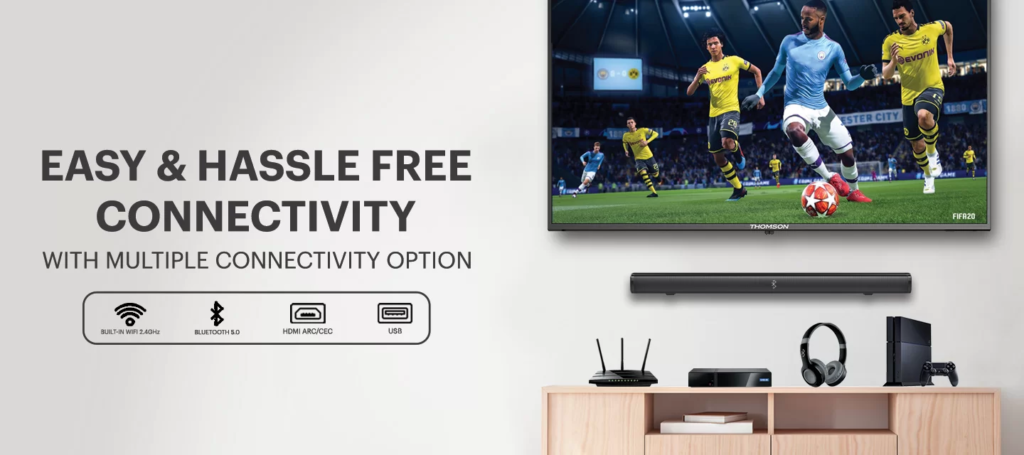
When buying a Smart TV, ensure it has Wi-Fi and, if possible, Bluetooth. Look for HDMI ports, ideally with at least one eARC for faster data transfer, and check for USB ports, too. Casting features are also handy, allowing you to connect your smartphone to the TV easily.
Securing Your Smart TV
Smart TVs, like any connected device, are vulnerable to cyber threats. To protect your Smart TV:
- Update Regularly: Keep the TV’s firmware and apps up-to-date to patch security vulnerabilities.
- Network Security: Secure your home network with a strong password and consider using a Virtual Private Network (VPN) for added security.
Understanding Smart TV Warranties
Before you buy, make sure to:
- Read and understand the warranty terms.
- Know what’s covered.
- Check the coverage duration.
- Look for any extra warranty options available.
For example, below is the warranty information for Samsung’s Smart TVs. Click the button to understand what companies are offering as warranties so that you can make an informed decision for your purchase.
Conclusion
In conclusion, our buying guide for smart TV in India aims to simplify your decision-making process. We’ve covered all the important factors to help you choose the best smart TV. With these points in mind, you’ll find a TV that fits perfectly in your home and delivers great performance. If we discover any new insights, we’ll update our buying guide for smart TVs in India to give you the most accurate information.
Happy Shopping!
This blog site has interesting reviews and buying guides for smart TVs, Laptops, Monitors & Tablets. You can always visit them for an exciting read.
FAQs
What is a smart TV?
A smart TV is a television, which is smart, that can access streaming services and connect to the internet, apps, and other online content. Smart TVs typically have a built-in operating system that allows you to control them with a remote control or voice commands.
What are the benefits of buying a smart TV?
There are many benefits to buying a smart TV. Here are a few of the most common:
* You can access popular streaming services like Amazon Prime Video, Netflix, and Disney+.
* You can download apps like YouTube, Hulu, and Spotify.
* You can use voice commands to control your TV.
* You can get live updates on the weather, news, and sports.
* You can connect your smart TV to multiple other devices like smartphones, tablets, and laptops.
What are the factors to consider when buying a smart TV?
Here are some of the factors to consider when buying a smart TV:
* Screen size: One of the most vital factors to consider is the screen size. The larger the screen, the better the viewing experience.
* Resolution: The TV’s resolution determines the image’s clarity. Higher resolutions like 4K and 8K offer sharper images.
* Operating system: It is the software that helps us to control & navigate the TV. Some popular operating systems in the market for smart TVs include Android TV, WebOS, and Tizen.
* Features: Consider the features that are important to you. Some popular features include voice control, built-in speakers, and a remote control with a microphone.
* Price: Smart TVs can range from a few hundred dollars to a few thousand dollars. Set a budget before you start shopping.
How do I buy a smart TV in India?
You can buy a smart TV from a variety of retailers in India, including:
* Amazon
* Flipkart
* Reliance Digital
* Vijay Sales
* Croma

